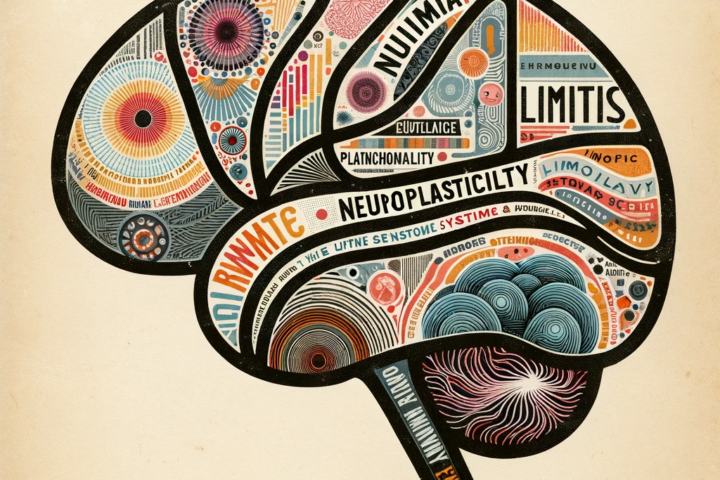Our limbic system is the emotional center of the brain, responsible for our feelings and long-term memory. It’s like the internal thermostat for our emotional climate. Negative emotions, thoughts, and feelings are like a cold front moving in, disrupting the limbic system’s balance.
Emotional Overload and Brainwaves
When negative emotions flood the limbic system, they can lead to altered brainwave patterns. Chronic stress or anxiety, for example, is linked to heightened beta wave activity, which is like having your brain constantly stuck in rush hour traffic. This persistent over-activity can lead to burnout, much like a car engine overheating.
Impact on the Amygdala: The amygdala, our alarm center, becomes hyperactive when we’re bombarded with negative emotions. It’s like a smoke detector that goes off every time you make toast — too sensitive and over-reactive.
The Hippocampus and Memory: The hippocampus, crucial for forming memories, can be impaired by constant stress, making it harder to create new memories or recall existing ones. It’s like trying to save files on an already overloaded computer.
Brain Retraining: Hacking the System for Better Health
Brain retraining is like giving your brain a software update to break old, negative patterns. Through various techniques, we can reprogram our neural pathways, fostering positive thinking and behaviors. These are two of the more unconventional examples.
1. Polyphasic Sleep: Mastering the Art of Power Napping
Forget the traditional eight-hour sleep mantra; polyphasic sleep is about multiple short sleep periods throughout the day. Think of it as turning your sleep schedule into a series of power naps. The idea here is efficiency – maximizing awake time and reducing total sleep time. Famous polyphasic sleepers like Leonardo da Vinci and Nikola Tesla reportedly used this method to boost their creative and productive output.
However, it’s not all roses and sunshine. Adapting to a polyphasic sleep schedule can be challenging, and it’s not suitable for everyone. It’s like trying to teach your cat to walk on a leash – possible, but it takes patience and might not be for every cat (or person).
2. Sensory Deprivation: The Power of Nothingness
Sensory deprivation, particularly using flotation tanks, is a brain hacking technique that involves cutting off external sensory input to the brain. Imagine floating in a tank filled with saltwater, in complete darkness and silence. It’s like giving your brain a mini vacation. This method is believed to reduce stress, enhance creativity, and improve concentration.
While it sounds like a science fiction novel’s plot, sensory deprivation has been the subject of serious scientific study. It’s a bit like discovering that meditation isn’t just sitting quietly but a profound tool for mental health.
Brain Hacking – A World of Possibilities
While brain hacking techniques like polyphasic sleep and sensory deprivation might seem unconventional, they open up fascinating possibilities for enhancing our mental capacities. However, it’s essential to approach these methods with caution and awareness of their potential impacts on our overall well-being. After all, brain hacking is not about turning into a superhero overnight but about exploring and understanding the incredible capabilities of our own minds.
Neurogenesis: The Brain’s Ability to Grow
Neurogenesis, the creation of new neurons, is like the brain’s way of planting new seeds of growth. This process can help disrupt imbalanced brainwaves by introducing fresh neural activity.
Role in Brainwave Regulation: New neurons can lead to more balanced brainwave activity, promoting healthier thought patterns and emotional responses. It’s akin to adding new, more efficient workers to a factory line.
The Hippocampus Rejuvenated: Neurogenesis is particularly active in the hippocampus, which means it can help counteract the negative effects of stress on memory and learning.
Brain Retraining Tools: Calming the Storm Within
Brain retraining tools are like a Swiss Army knife for mental and physical health issues. They offer various techniques to soothe the mind and body.
Biofeedback: Biofeedback allows individuals to monitor and control physiological functions. By seeing real-time feedback, you can learn to calm your brainwaves, much like a pilot learning to stabilize an aircraft.
Neurofeedback: Neurofeedback is a more direct method where you train your brainwaves to achieve a desired state. It’s like playing a video game where the objective is to keep your brainwaves in the ‘safe zone.’
Lifestyle Changes: Incorporating healthy habits such as exercise, a balanced diet, and adequate sleep can support brain retraining efforts. It’s like maintaining your car regularly to avoid breakdowns.
Conclusion: Rewiring for Resilience
In essence, negative emotions, thoughts, and feelings can throw a wrench into the delicate machinery of our limbic systems and brainwaves. But with the right tools and techniques, we can retrain our brains, promote neurogenesis, and steer ourselves back to a place of balance and health.
While this exploration has been brief, the field of neuroscience coaching offers a wealth of strategies for those looking to overcome the challenges posed by negative emotional patterns and the stresses of modern life. By harnessing the power of neuroplasticity and neurogenesis, we can embark on a path to mental and physical well-being.
Sources:
To further explore these topics, consider the following sources:
- “The Brain’s Way of Healing: Remarkable Discoveries and Recoveries from the Frontiers of Neuroplasticity” by Norman Doidge. This book provides a deep dive into the brain’s ability to change and heal itself.
- “Neurofeedback in the Treatment of Developmental Trauma: Calming the Fear-Driven Brain” by Sebern F. Fisher. Fisher’s work explores the use of neurofeedback as a tool for addressing trauma.
- “Spark: The Revolutionary New Science of Exercise and the Brain” by John J. Ratey. Ratey examines how physical activity influences brain health, including its impact on neurogenesis.
- “Why We Sleep: Unlocking the Power of Sleep and Dreams” by Matthew Walker. This book provides insights into various sleep patterns, including polyphasic sleep.
- “The Deep Self: Profound Relaxation and the Tank Isolation Technique” by John C. Lilly. Lilly’s work offers a comprehensive look at sensory deprivation and its effects.


